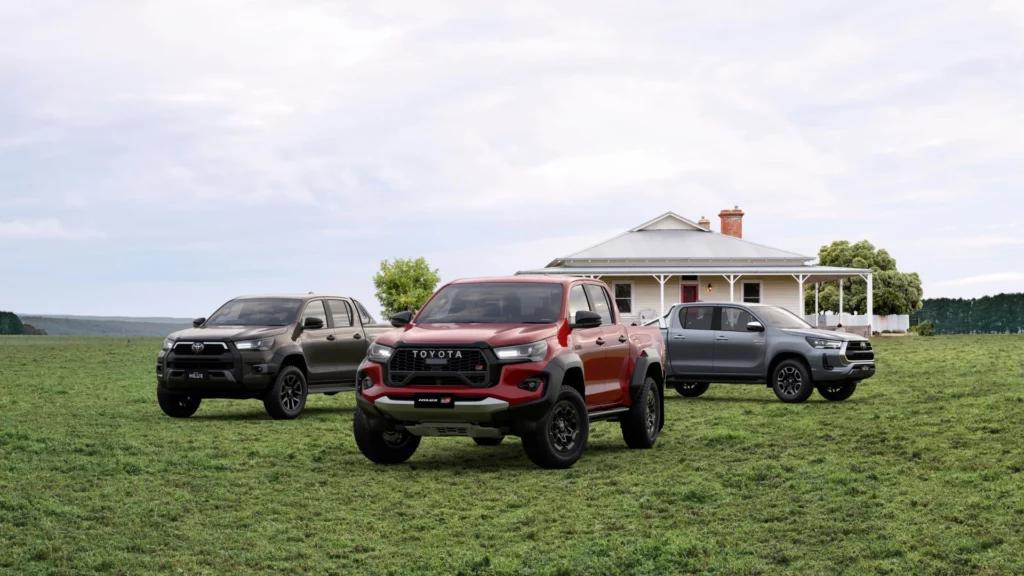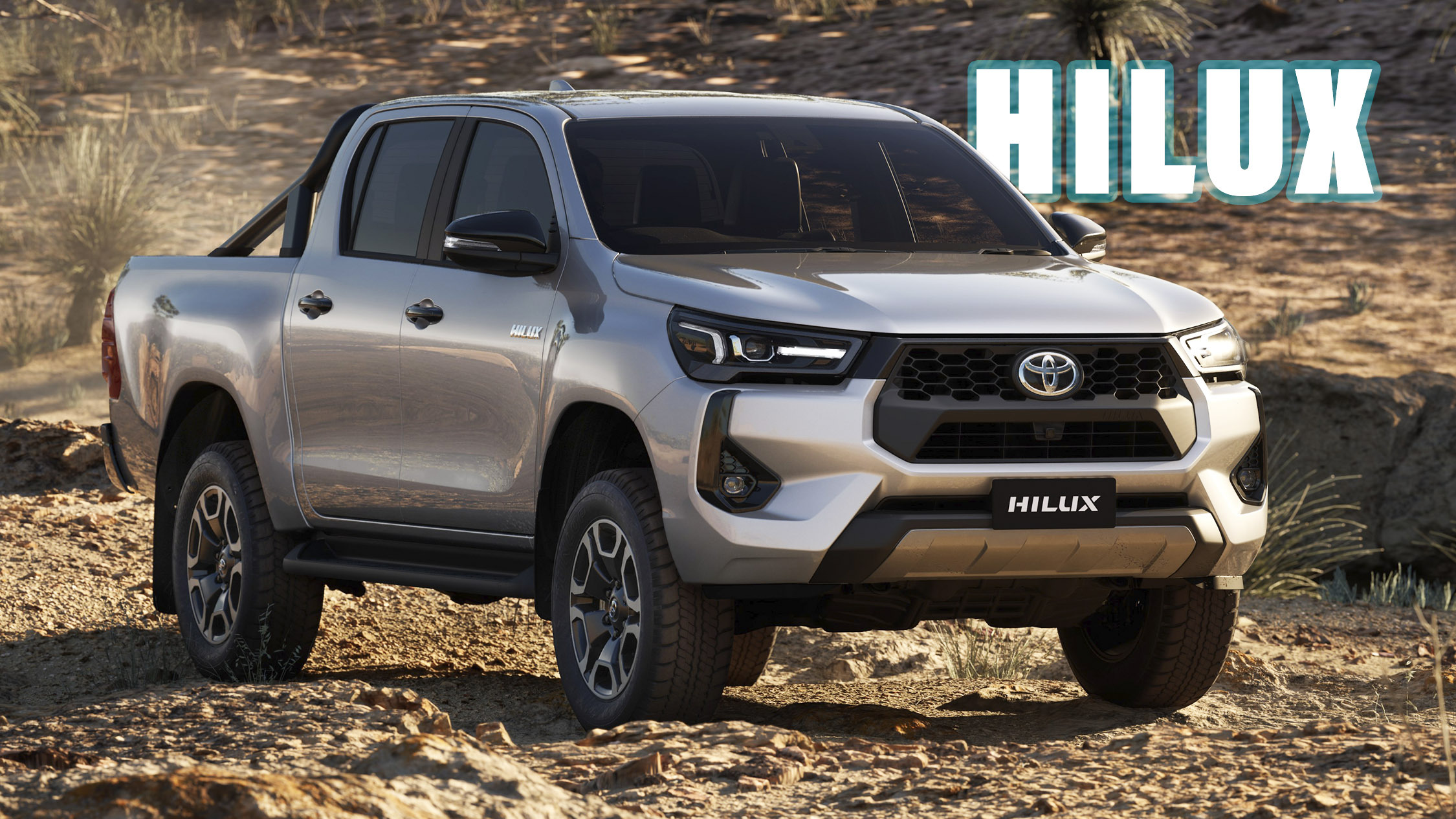The popular pickup gains a redesigned face, slightly better equipment, and 48-Volt technology to fight the Ford Ranger
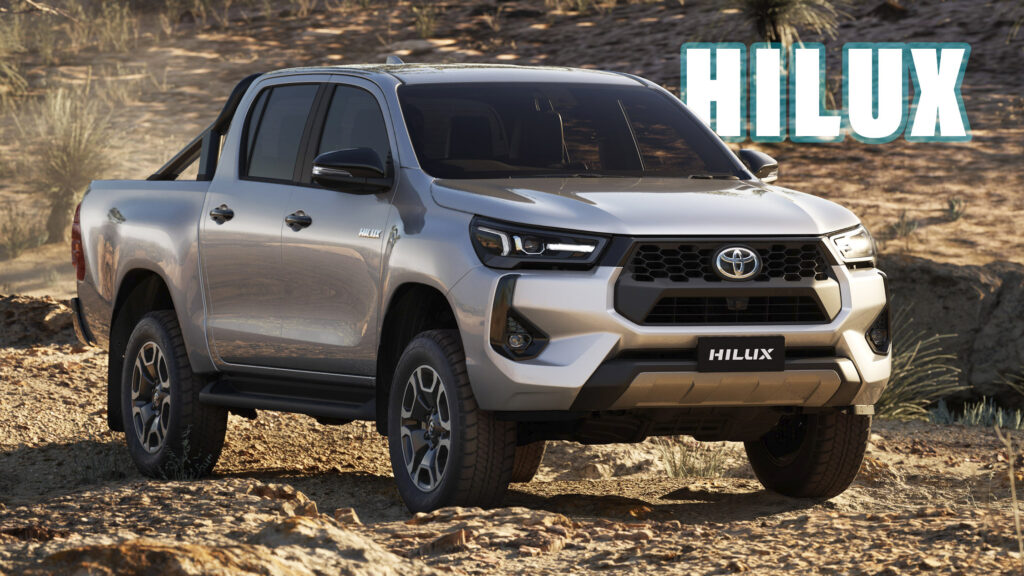
Toyota Australia unveiled the third consecutive facelift of the eight-generation Hilux. Toyota’s best-selling midsize pickup benefits from styling upgrades, enhanced technology equipment, and the addition of 48-Volt technology to the 2.8-liter turbodiesel. The automaker hopes that these changes will keep it relevant against its biggest rival, the Ford Ranger, which stole the crown of Australia’s top selling vehicle last year after a close battle.
Unlike the Japanese- and European-spec versions of the 2024 Toyota Hilux which look virtually identical to their predecessors, the Australian model introduces a redesigned face. The bumper is more sculpted than before, with a new octagonal grille flanked by revised intakes and an aluminum-style skid plate. The rest of the bodywork is carried over from the outgoing Hilux but the tailgate now comes with dampers for easier operation.
More: New Toyota Hilux Revo Rocco Is A Japanese Trailhunter With Flared Fenders
advertisement scroll to continue
Depending on the trim, the grille and bumper have different finishes. The entry-level WorkMate features a black honeycomb mesh grille, the SR adds a silver-colored lower bumper finish, while the SR5 features a black upper grille, dark-tinted LEDs and gloss-black accents (fog light bezels, mirror caps, door handles). Toyota didn’t publish photos of the high-spec Rogue and the performance-focused GR Sport grades which will most likely retain their existing bodykits.
Mild Electrification Without Hybrid Badges
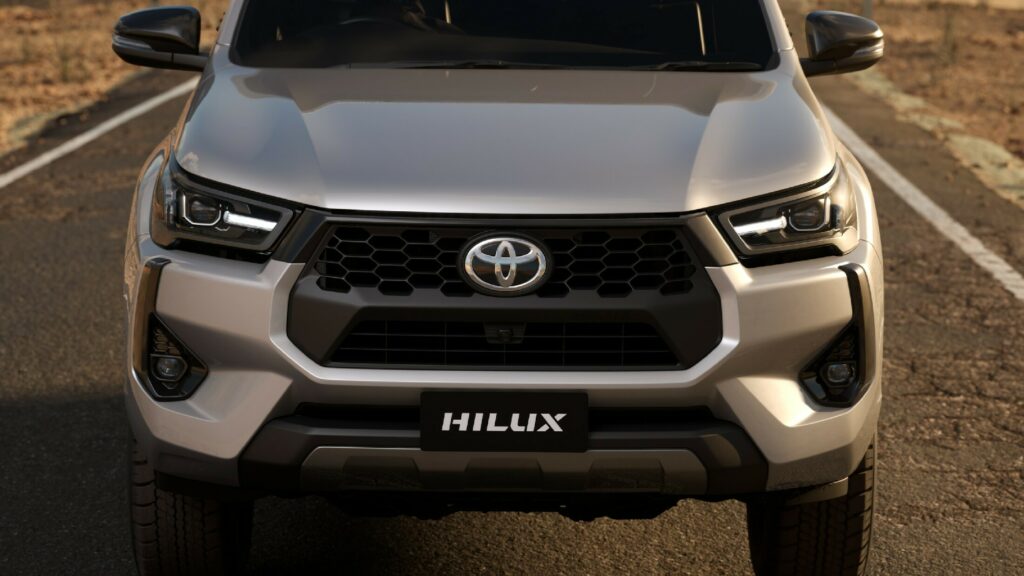
Toyota Australia
The highlight of the 2024 MY is the addition of the 48V technology to the 2.8-liter four-cylinder turbodiesel which comes standard in Rogue and SR5 trims and is optional for the 4×4 SR. Unlike other automakers, Toyota doesn’t use the hybrid term or emblems to describe mild-hybrids, reserving the for self-charging and plug-in hybrid setups.
The system comprises a belt-driven electric motor/generator, a small lithium battery, and a DC/DC converter, enabling a stop/start system. Toyota says that electrification improves fuel economy by 6-10% depending on the trim, while reducing noise, vibration, and harshness.
The mildly electrified 2.8-liter turbodiesel produces the same 203 hp (150 kW / 204 PS) and 500 Nm (369 lb-ft) of torque. Toyota Australia didn’t go into details about the contribution of the 48V tech in terms of power and torque, but in the EU-spec model it adds up to 16 hp (12 kW / 16 PS) and 65 Nm (48 lb-ft). All mild-hybrid grades of the Hilux also come standard with the Multi-Terrain Select system offering six driving modes for different types of terrains.
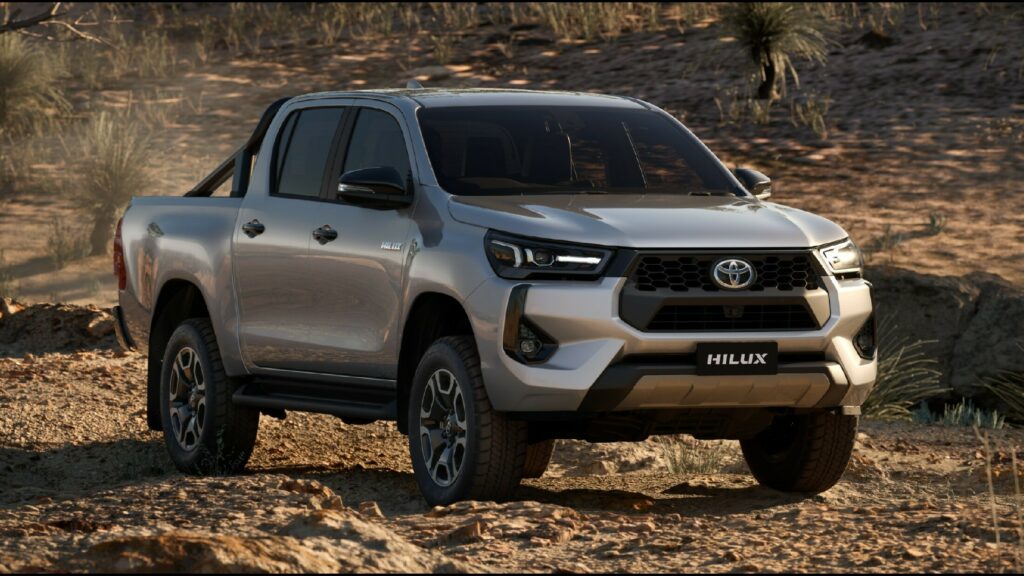
Toyota Australia
Other powertrain options in the Hilux range include the existing non-electrified 2.8-liter and 2.4-litre diesels, as well as the 2.7-liter gasoline motor which are offered with a choice of manual or automatic transmissions in 4×2 and 4×4 guises.
Enhanced Equipment, Slightly Increased Prices
In terms of equipment, all SR grades gain two front and four rear parking sensors, while those with the 48-Volt system gain dual-zone automatic climate control, smart entry/start, auto power windows, and carpet floor mats. Furthermore, the higher-spec SR5, Rogue, and GR Sport trims now come with a wireless charging pad and two rear USB-C ports.
The updated Toyota Hilux will arrive to Australian showroomsi in March 2024. As reported by Drive, pricing starts from AU$26,475 (US$17,277) for the entry-level Hilux Workmate 4×2 single-cab model, and climbs to AU$74,310 (US$48,495) for the flagship Hilux GR Sport 4×4 dual-cab version. More importantly, the trims that benefit from the addition of the 48-Volt mild-hybrid system cost between AU$590-1,605 (US$385-1,047) more compared to their non-electrified predecessors from last year.
We don’t know if the updates introduced by the AU-spec Toyota Hilux will find their way to other markets, since the current generation of the pickup is in its twilight years. As a refresher, the eight-gen Hilux debuted in 2015 and received facelifts in 2017 and in 2020 before the 2024 update. The latter will most likely be the last one as an all-new generation is expected to arrive sometime in the next few years.
